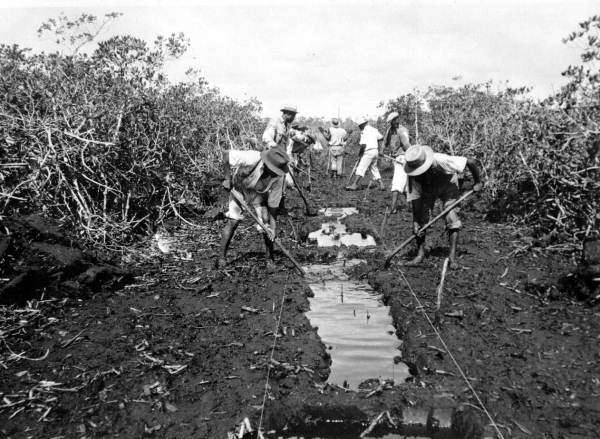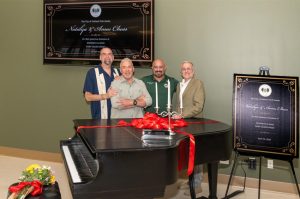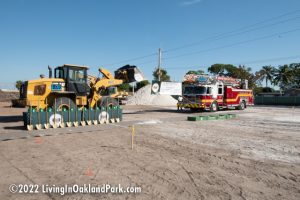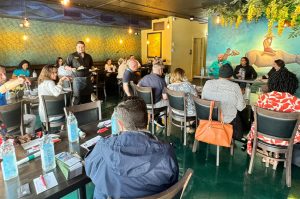Forget the heat – what did the long-ago residents do about pests in the olden days before DDT and “integrated pest management?” Well, they suffered, for one thing. In a small town with lots of horses and cows there were plenty of flies and nasty horseflies. There was a lot more water around then – the mosquitoes were particularly bad in the summer months.
South Florida residents would always have a palmetto frond fan by the door to swat the pests away from the house. Many would carry a “smudge” – smoking palmetto roots set afire with wet grass or moss – when they traveled to school or to visit neighbors. People took a lesson from the Seminole, who wore long sleeves and dark clothing to try and fend of the flying critters.
According to the old time Oakland Parkers, the area west of the F.E.C. Railroad tracks and therefore west of Dixie Highway, was settled first. This was partly because east of the tracks to what is now Federal Highway was much marshier, plus the gulf stream breezes would blow smoke from the passing trains westward, acting as a flying insect repellent. At least, the pioneers thought it did.

Houses Smelling Like Kerosene
One of the worst dreads of the pioneering era was the “no-see-um” or sand fly. This tiny pest could fly right through window screens. The locals would take kerosene and coat the screens in the summertime; it acted like flypaper. When the screen was loaded with sand flies, they took down the screens, washed them, and then reapplied the kerosene. Can you imagine smelling kerosene in your house all day? Doesn’t sound real healthy either.
Campaign Against Mosquitoes
In the 1930 Dade and Broward began an active campaign against mosquitoes et al by digging a series of drainage ditches to drain the breeding areas. DDT, a miracle pesticide developed during WWII was quickly adapted for the home front. From the late 1940s to the 1960s fogger trucks and planes spread Malathion throughout the county with great effectiveness. Are you one of the kids who followed the trucks on your bike? And you think the kerosene was bad for you?!
Today there are much safer pesticides with lest impact on the environment and ourselves. But the real answer to “getting the bugs out” is much simpler—we call it concrete. Just look around ya!
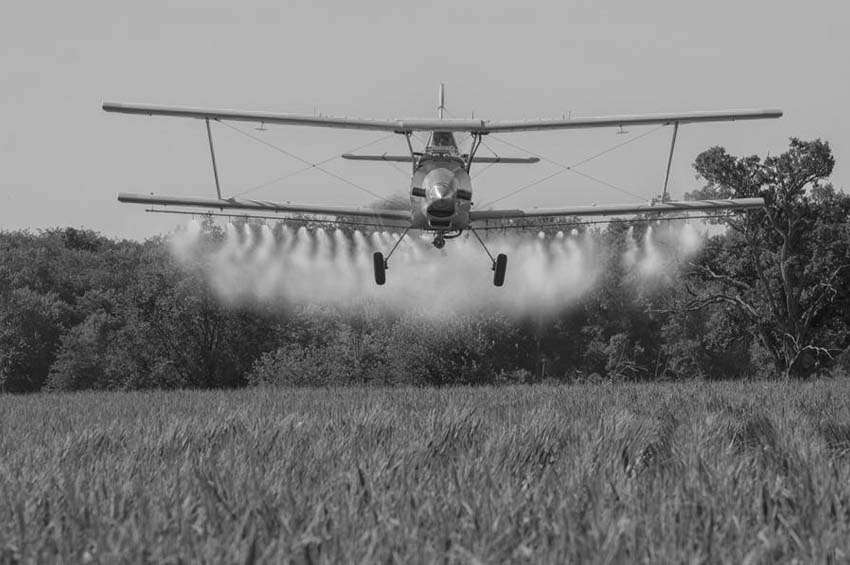
Help Oakland Park Learn More About Its History!
Oakland Park is fast approaching its centennial year in 2029! As a part of our celebration, the city is planning a new history of Oakland Park. We are currently working with local historian Susan Gillis to compile information and images (photographs, documents, postcards, and brochures) on the history of our fast-growing community. If you would like to be part of this project, please contact us at shareyourhistory@oaklandparkfl.gov.








